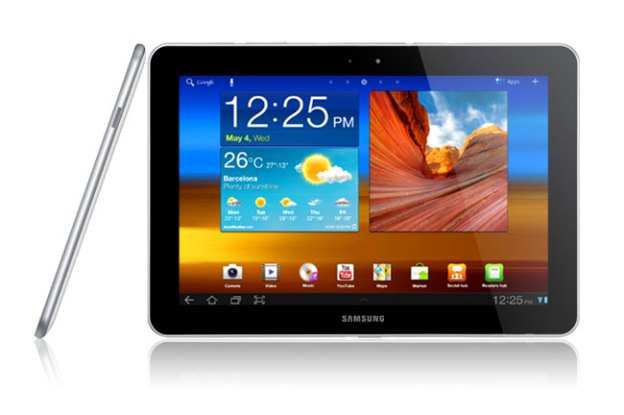
When Samsung showed off the Galaxy Tab back in March, the tablet was running a new version of Samsung’s TouchWiz User Experience interface, which had a number of custom widgets and an iPhone-like tray of icons along the bottom. By the time the tablet shipped, these changes were absent, likely because Samsung wanted to roll out Android 3.1 and 3.2 in a timely fashion. Well, now that Google has relented a bit on its Android tablet releases, it looks like TouchWiz is making a return. Yesterday, Samsung announced that beginning Friday, Aug. 5, all Galaxy Tab 10.1 owners will get an update that will include a number of changes to the look of their tablet.
Here’s what the TouchWiz update will add:
- Live Panel: A custom magazine-like widget that lets you view weather, social network posts, email, news, photos, etc on the homescreen. This widget can be customized to display whatever you want, but it does take up nearly all of your homescreen (luckily, you have more than one).
- Mini Mode Tray: Like the iPhone or iPad, this tray puts common applications on the bottom of the screen, regardless of what homescreen you’re on.
- Clipboard: Samsung has enhanced the copy and paste functionality of Android. This will be nice, as we still haven’t figured out how to accurately and reliably copy and paste text, let alone web pages, links, and photos.
- Indicator Quick Panel: This is a fast and easy way to quickly turn on/off Wi-Fi, notifications, sound, brightness, and settings. Honestly, it sounds almost exactly like the default quick panel menu, which already has these features, but we assume something has changed.
- Photo Editor: A much-needed app that lets users rotate, crop, and adjust colors. Hopefull it will allow resizing based on pixels and other somewhat advanced options.
- More apps: Samsung’s Media Hub store will be included, as will the Social Hub, Zynga Words with Friends, Swype, Samsung Kies 2.0, Amazon Kindle, and Amazon’s Cloud Player. We’re a bit bothered that Samsung is adding apps to its user’s machines without asking, as these apps will probably not be removable, but at least the Amazon apps are useful.
- Mobile printing: This enables wireless printing, if you’re printer is new enough to take advantage.
- Business support:
- Full support for Exchange ActiveSync version 14
- On device encryption
- Cisco VPN (Virtual Private Network)
- Sybase MDM (Mobile Device Management)
- Cisco WebEx mobile conference solution for meetings on the go
Even with these changes, this update pales in comparison to the Sony S1 and S2 tablets, which we learned may contain many more changes to the Android UI. Sony may heavily modify everything from icon colors to the keyboard itself.
Is this inevitable? Does Android Honeycomb need to be as fragmented an experience as Android phones have become? It’s a bit disheartening to think that Google’s actual Honeycomb interface may soon be buried beneath layers of virtual makeup and prosthetics added by each of its manufacturers.


